
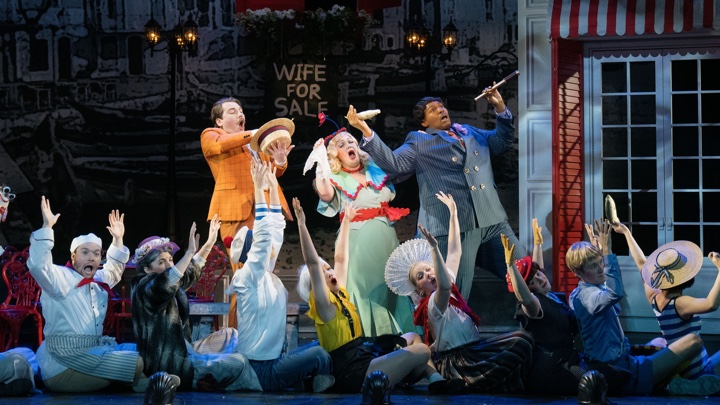
One has learned not to expect too much. But the double bill (with a choral intermezzo) that just finished four nights’ run at the Manhattan School of Music is a delight, musically whimsical and reminiscent, wittily and colorfully staged. Also, the level of the voices on display on opening night, Thursday (repeated Saturday, alternate cast on Friday and Sunday) was thoroughly impressive.
The works presented were Jules Massenet’s Portrait of Manon, a reflection in 1894 on the composer’s first great success, Manon, ten years earlier; Jacques Ibert’s Angélique, a spoof operetta of 1927, and, between them, a choral Pavane by Gabriel Fauré, which made a charming intermezzo. Both opéras-comiques made use of spoken English joining musical parts sung in French—the performers of Massenet’s tendre tale were a bit wooden to bring this off, but those in the farcical Ibert piece each found their inner Marx brother.
Le Portrait de Manon posits that the Chevalier des Grieux (hasn’t his title been upgraded yet? His father was a comte), elderly and alone, cherishes two things: a portrait of the girl he once loved, you know, what’s her name, the one from Amiens, and a youthful nephew (sung by a mezzo of course) whom he is educating.
The backstory allows the composer to introduce many a fragrant recollection of the earlier score, and anyone familiar with it will follow the emotional arc. The nephew has fallen in love with the charming Aurore and des Grieux disapproves, but she turns out to be Manon’s long-lost niece and the resemblance persuades the old man to permit the match.
Happily, the music Massenet composed for the new lovers (on a day between Thais and La Navarraise), offers pretty Aurore two refreshing arias (Huiying Chen sang them impressively, with more ingratiating body to her voice than one would expect of a chirpy Parisian ingenue) and a duet (Anna Maria Vacca was her ardent suitor). As the Chevalier, Yeong Tack Yang filled the theater with baritone chantante phrases, and Moses Sunghyun Park, the best actor of the bunch, sang the tutor Tiberge whose machinations bring des Grieux to reason.
Of Ibert’s Angélique, Michael Raeburn, in his Chronicle of Opera, has this to say: “By far the most popular ‘new’ opera of the period (it was translated into eighteen languages), the work presents the satire of an intellectual composer, … based on the old legend of the man who puts his shrewish wife up for sale.”
The piece is mostly dialogue with vocal interludes. John de los Santos, the director, has updated and politically corrected the dialogue, larding it with silly jokes (the originals were no doubt just as silly.) The desperate Boniface and his friend Charlot put the evil-tempered Angélique up for sale. A modern rewrite would send her to three different sorts of therapist, hein? Freudian, Primal, Zen perhaps ….
We are in a tourist resort in the south of France (re-use the sets of Zanzibar from Les Mamelles de Tiresias—the show reminded everyone of Poulenc’s surreal farce), so suitors of different nationalities soon appear. For the Italian, Angélique sings a coloratura aria—humorous, but calling for great skill—and for the Englishman there’s something prim and ladylike.
The third suitor, at the Manhattan School, was a fur-clad American frontiersman who happens to be living on an African Safari ranch and wields a rifle the size of a bazooka, but in the original text he was “un Nègre” from the sub-Sahara, perhaps waving a spear. With a show that is basically a series of skits, you can do anything you like for update without harming the premise:
All these guys fall in love with Angélique at first sight, and each one brings her back after the briefest of private encounters. At last the Devil himself carries her off—but just as Boniface is congratulating himself, Old Nick tosses her back as well. (Has Manhattan School ever staged Dvorak’s The Devil and Kate, which is an elaborate version of the same tale?)
The only really significant role is that of the ironically named Angélique, who must woo or rage by turns, and in several styles. That was taken on Thursday by Emelia Petersen, a formidable stage figure, whose luscious soprano and delicate fioritura (for the Italian) seem destined for Verdi or Massenet of their middle periods. The role did not daunt her any more than the male sex did; she took it all in fine stride.
Among her suitors, I was especially pleased by the lyric tenor of Isaiah Traylor (the Englishman) and the dark baritone of Benjamin R. Sokol (the American). Benjamin Ruiz Scott played the Italian with more gag than vocalism. Zhenpeng Zhang was the harried Boniface, James C. Harris his inventive friend, and Hang Su the scarlet Devil.
None of these roles demanded enough singing to give us a real idea of their voices, but they sounded terrific in their small characteristic numbers. A large chorus had been costumed as French stereotypes of ‘20s vintage, and they observed the action with the fascinated pettiness of any concierge. Ashley Soliman had great fun with the costumes and props, and if they distract from the central activity, their distractions entertain.
Manhattan School has, by the evidence, such an able vocal department that they were strapped for a central operatic work that would display these elegant voices but not waste too much time—or demand too many set changes.
To fill some minutes of entr’acte, the singers perform Gabriel Fauré’s Pavane in F-sharp Minor for mixed chorus, while they do so a sort of fashion show, a runway display of ladies in elegant costumes from Manon’s time (the 1760s) to Angélique’s (the 1920s), passing Manon’s portrait from daughter to daughter. I think the director got the idea from Sacha Guitry‘s Les Perles de la Couronne, don’t you agree? But the joke continues to be witty.
Photos: Brian Hatton


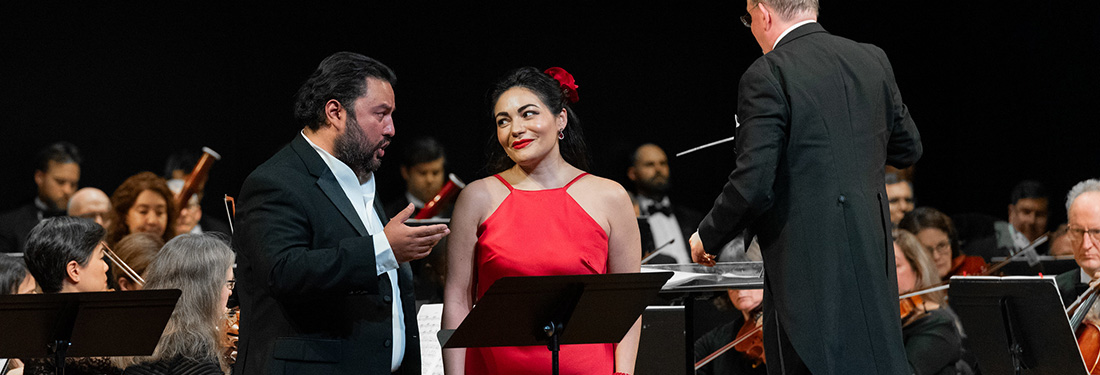
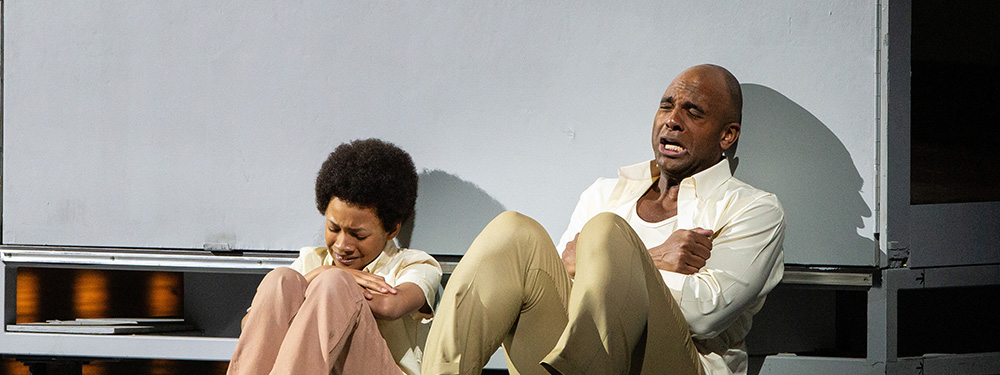
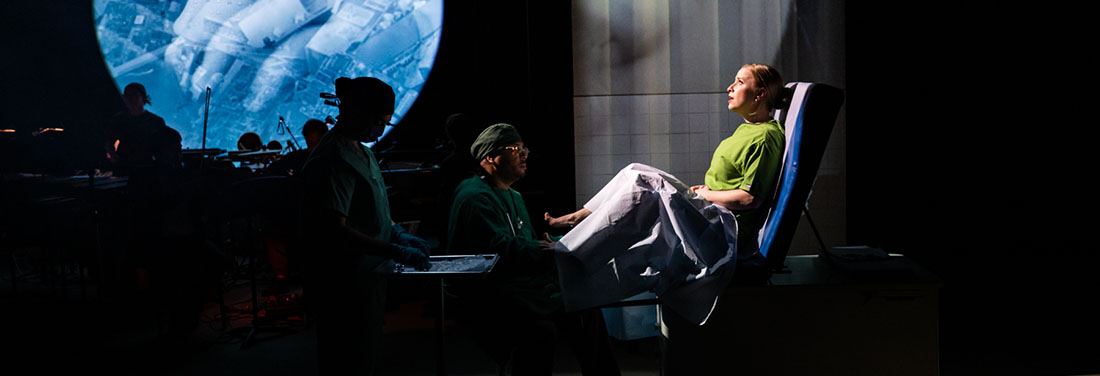
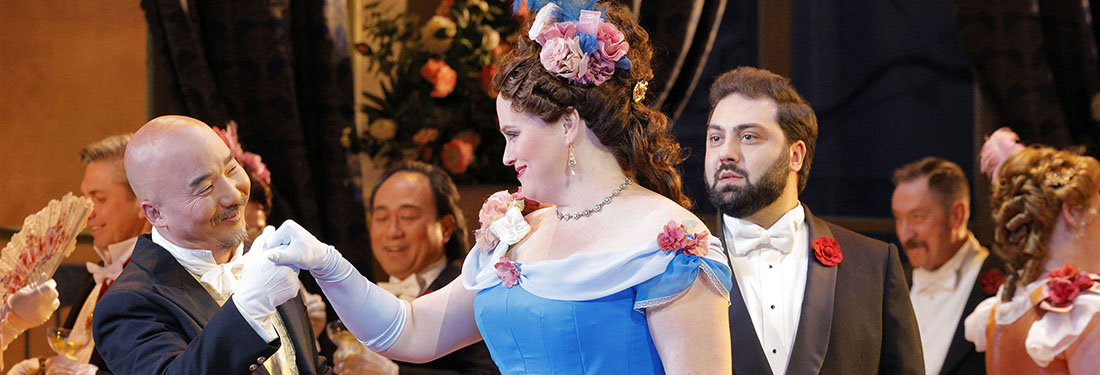

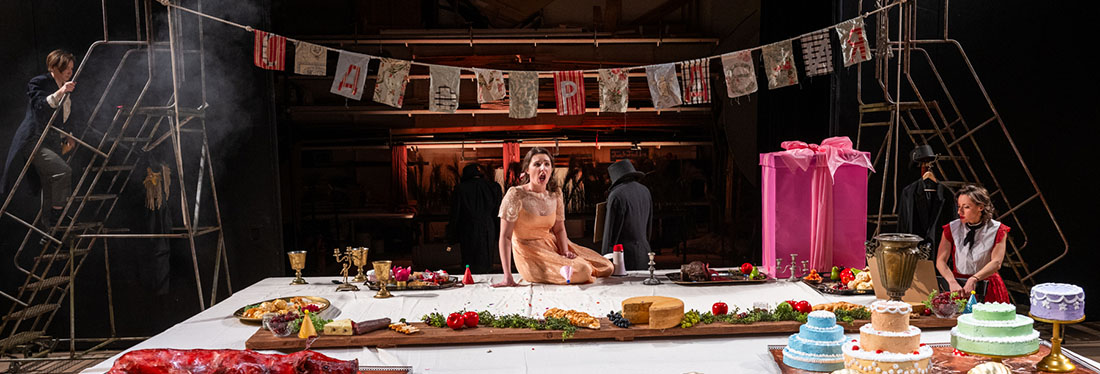
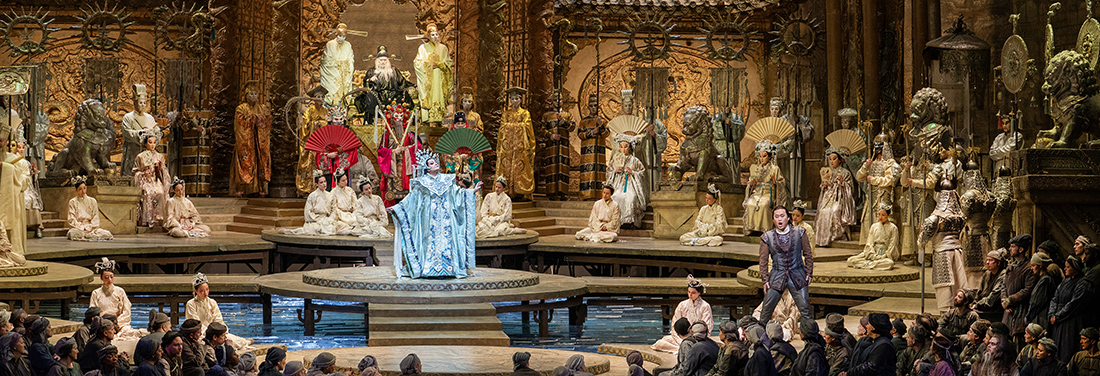
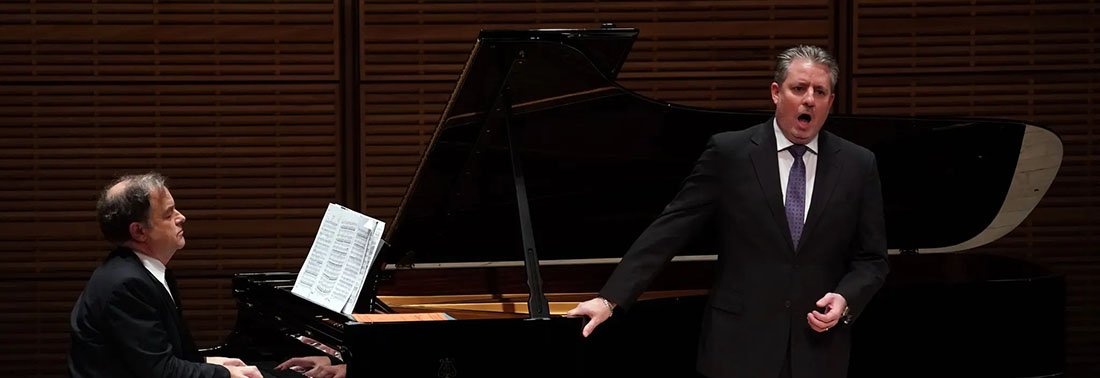
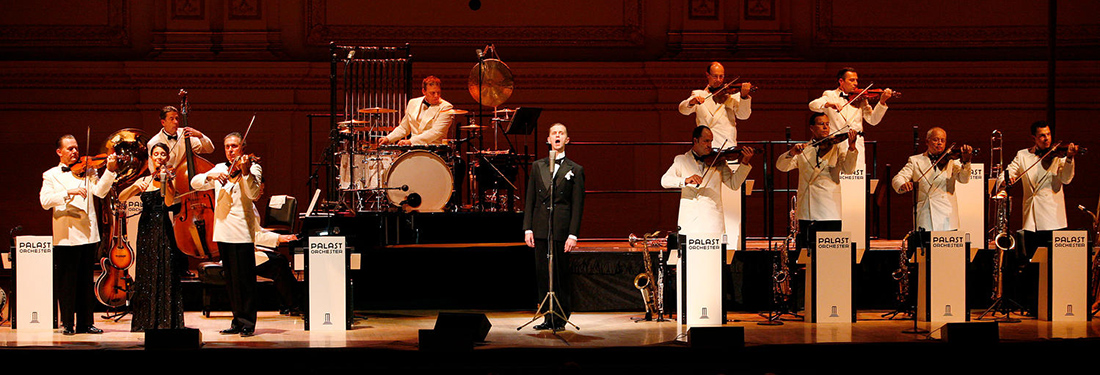
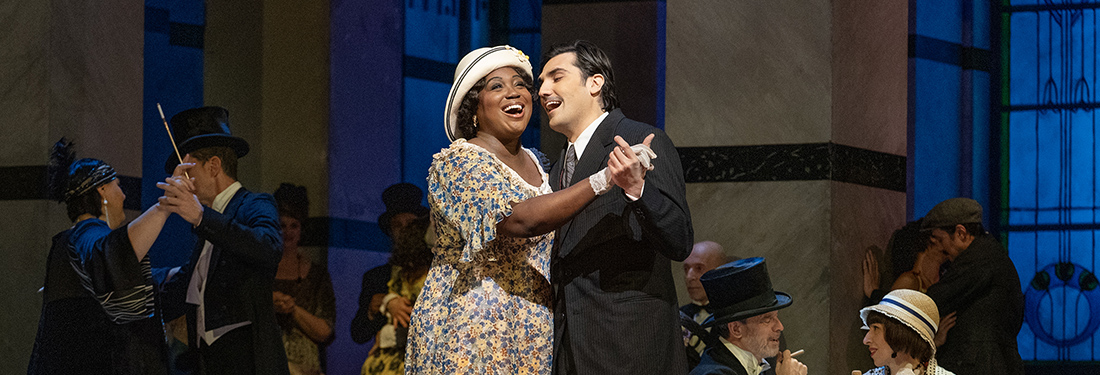
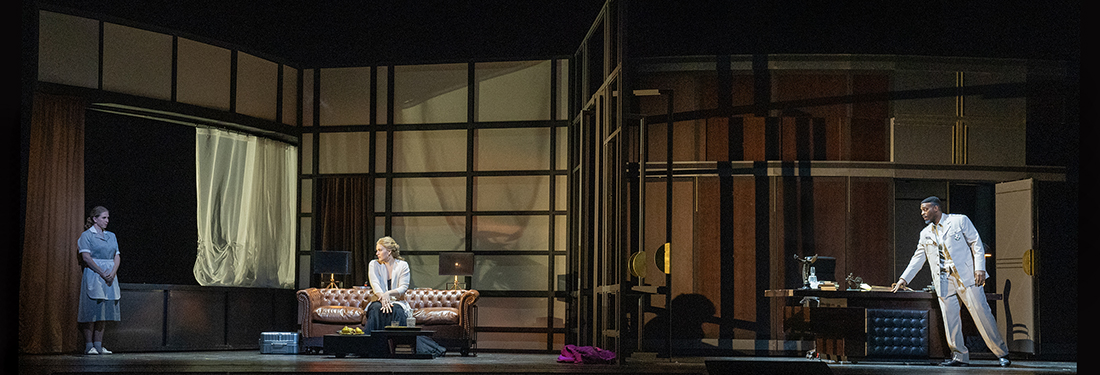
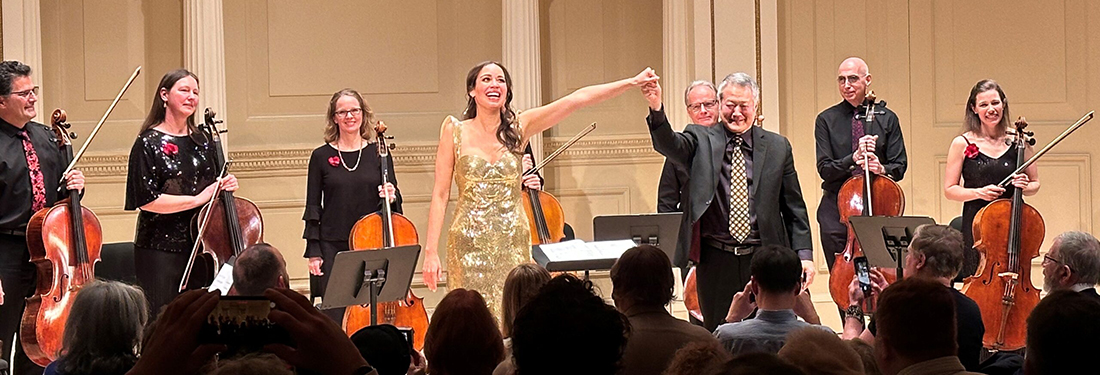
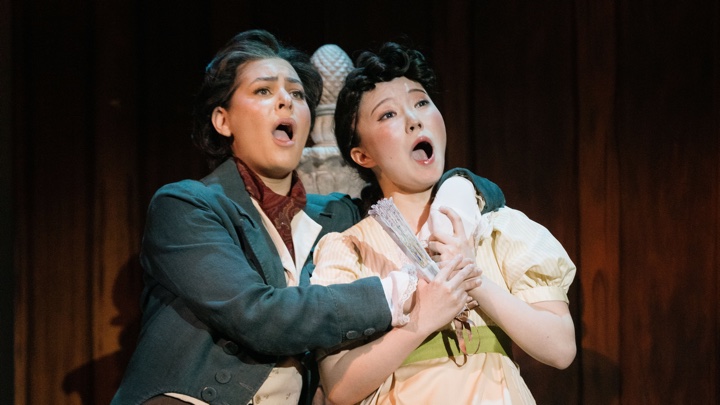
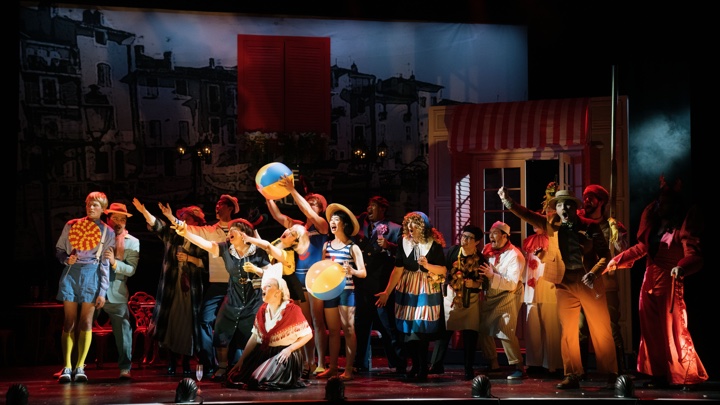
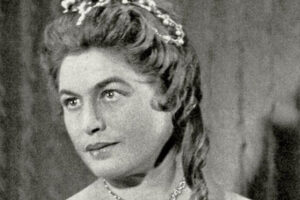





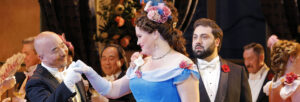



Comments